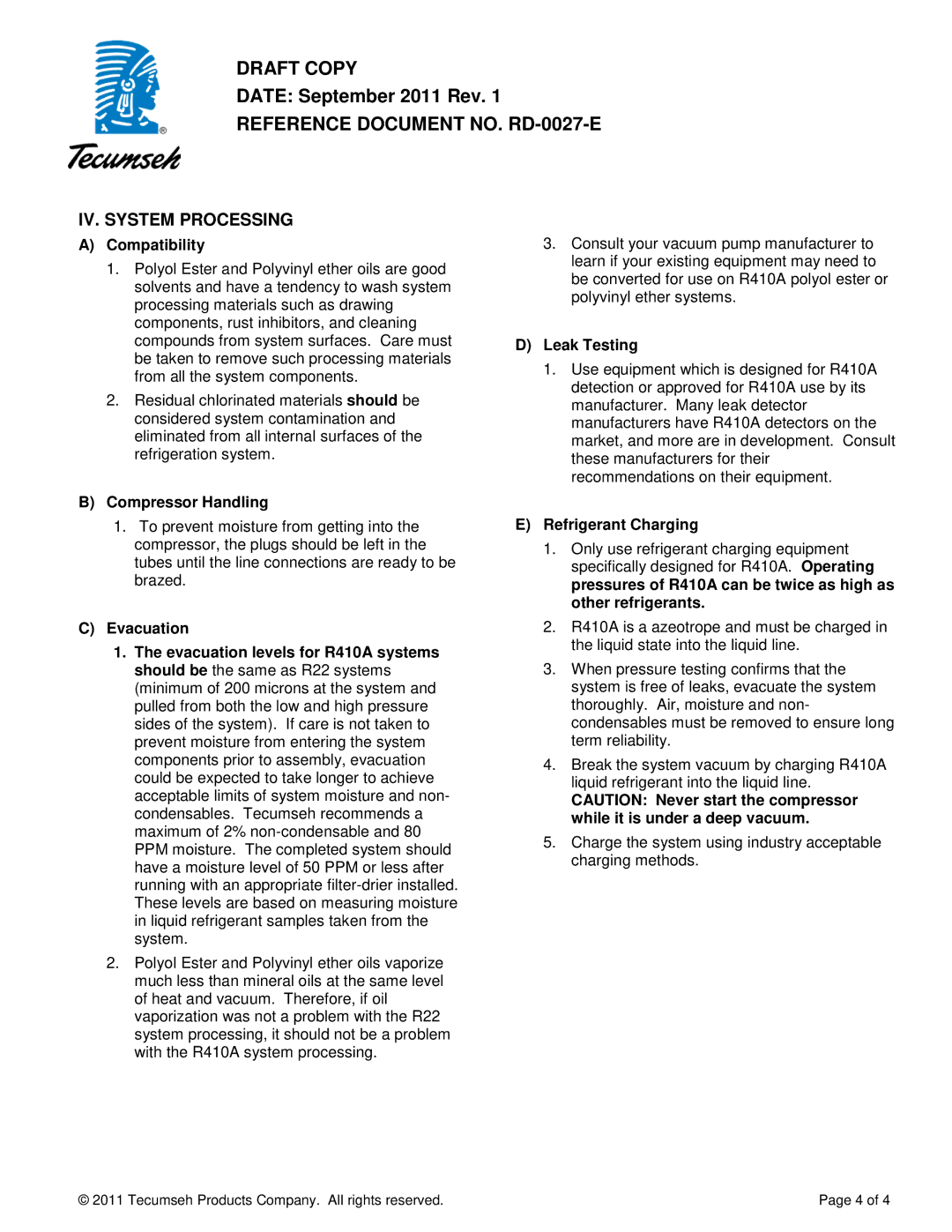R410A specifications
Tecumseh R410A is a synthetic refrigerant commonly used in air conditioning systems, particularly in residential and commercial applications. As one of the most efficient refrigerants available, R410A plays a crucial role in enhancing the performance of HVAC systems while adhering to environmental regulations.One of the primary features of R410A is its high energy efficiency. Unlike many older refrigerants, R410A is designed to operate at higher pressures, which allows for a more efficient heat exchange process. This characteristic not only improves the performance of cooling systems but also contributes to lower energy consumption, making it an environmentally friendly choice. The high efficiency associated with R410A translates into reduced electricity bills for users while minimizing the carbon footprint.
Another significant characteristic of R410A is its low ozone-depleting potential (ODP). Unlike refrigerants such as R22, which have been phased out due to their adverse effects on the ozone layer, R410A is a non-ozone-depleting substance. This makes it compliant with the Montreal Protocol's environmental standards, promoting its use in modern refrigeration and air conditioning systems.
Tecumseh R410A also boasts excellent thermodynamic properties, which contribute to its effectiveness in a variety of temperature ranges. The refrigerant has a higher cooling capacity compared to its predecessors, allowing for better performance in both high and low ambient temperature conditions. This versatility makes R410A an ideal choice for various applications, including residential air conditioners, heat pumps, and commercial refrigeration systems.
The refrigerant is also characterized by its compatibility with many compressor technologies. Tecumseh has developed specific compressors designed to work seamlessly with R410A, ensuring reliability and efficiency in operation. Additionally, R410A's chemical stability means it does not decompose easily, offering longevity in HVAC systems.
Overall, Tecumseh R410A stands out in the refrigeration market due to its energy efficiency, low environmental impact, and robust performance characteristics. With the ongoing push for sustainable refrigerants, R410A continues to be a leading choice for modern air conditioning systems, promoting both comfort and environmental responsibility.

